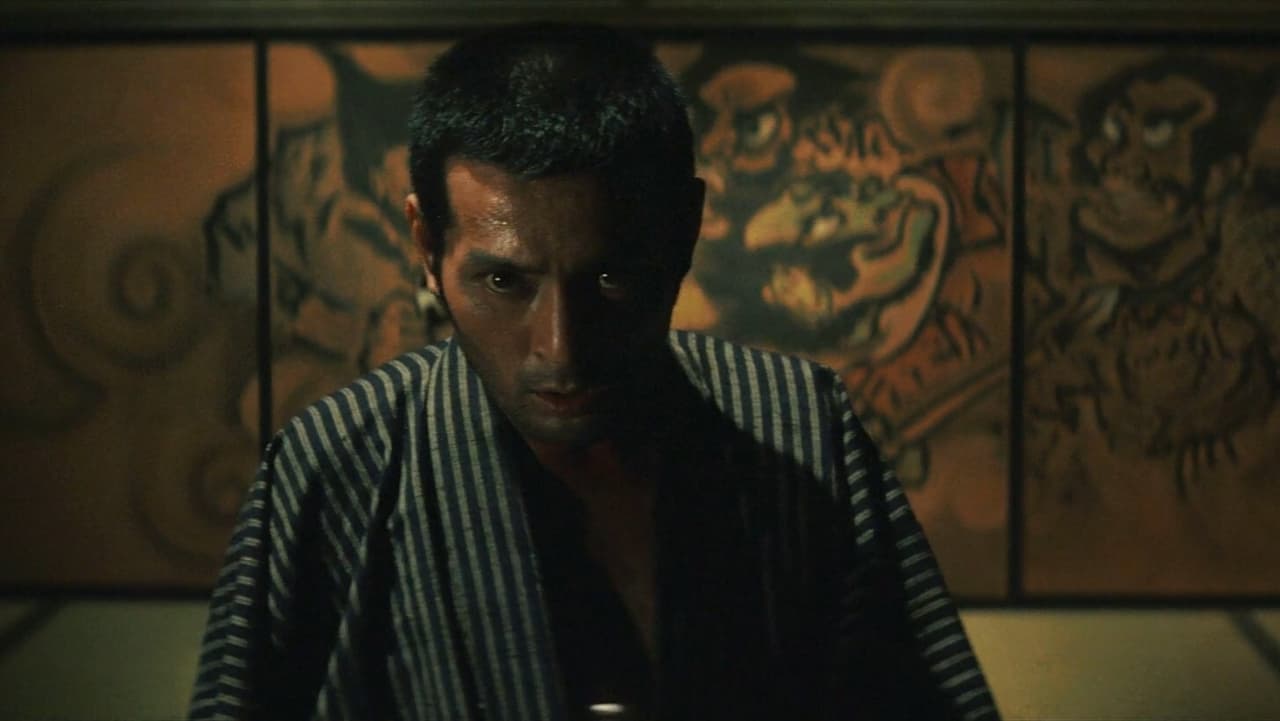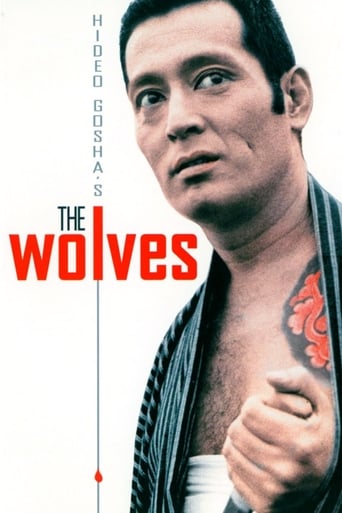

Excellent adaptation.
... View MoreDisturbing yet enthralling
... View Moredisgusting, overrated, pointless
... View MoreThe movie turns out to be a little better than the average. Starting from a romantic formula often seen in the cinema, it ends in the most predictable (and somewhat bland) way.
... View MoreI was very impressed with Hideo Gosha's early Showa era yakuza film The Wolves (1971). I think this has more to do with the mise en scene than the story. Because in many ways it is a typical ninkyo eiga, or chivalry film, about restoring honor among criminals. However, what elevates the film is the locations, set designs, costumes, historical background that informs the story, as well as having Tatusya Nakadai in the lead role as Seiji Iwahashi. Iwahashi was released on a general pardon at the occasion of the Showa Emperor Hirohito's ascension to the throne in 1926. Gosha uses classical framing in many of the discussion scenes that drive the plot as well as having the main action take place during a festival in which Nebuta-like floats are being paraded on the grounds. Several of the interiors display traditional art on the walls and screens. There are several scenes shot near the sea that use the fierce forces of nature as a prop to the scenes.
... View MoreLike all of the other Gosha I've seen, I thoroughly enjoyed this film. This being the first yakuza film I've seen from Gosha I wasn't exactly sure what to expect. Unlike many of the yakuza films made around this time, it is longer, slower and more meditative. You can tell Gosha is quite confident and he takes his time, developing the story at his own leisurely pace. Compared to his earlier films, Three Outlaw Samurai and Sword of the Beast, the pace is much more drawn out.The plot follows Nakadai as he is released early from prison, after being put away for homicide after killing a rival boss (this all occurs within the first 10 minutes of the film, in flashback form). When he is released he finds his old yakuza world to be much different from how it used to be. However, he is very careful not to step on anyone toes and goes to extreme measures to avoid offending anyone. Unlike his intense performance in Gosha's Goyokin, he does his best to avoid any fatal mistakes. The plot itself is quite convoluted, with several of the genre's typical plot elements expertly handled by Gosha. It is worth noting that most of the action is bundled up at the beginning and the end. Those expecting nonstop action will likely be sorely disappointed.The film is well worth it for any fans of Goshas and fans of the earlier chivalry yakuza films. Nakadai gives a very good performance as always and Noboru Ando is his equal as a prisoner (formerly rival gangster) that gets released at the same time as Nakadai. I've only seen Ando in Sympathy for the Underdog and this film, and he has held his own against two great performance by Nakadai and Koji Tsuruta.
... View MoreUnlike many other films by Hideo Gosha this one sort of operates as a reverse action film. The first ten minutes are the most exciting and visually active and the climax, despite the brutality on screen, is almost leisurely. Was that the intent? It's hard for me to say. The film follows the lives of several gangsters after they have been suddenly pardoned by the new Japanese government in the late 1920's. Jailed after a fatal inter-gang fight the ex-cons attempt to return to their old gangs but find everything has changed. Things don't go easy and the inevitable final conflict is set in motion.Dense with plot and gangster etiquette, this is not an easy film to jump into. Gosha's earlier samurai films are more accessible. The plot revolves around Tatsuya Nakadai's withdrawn and moody gangster but it takes detours with some of the other characters which can be confusing. The photography is dark and saturated with color. It's hard to see clearly what's happening at times but that seems to have been intentional. The fights are very realistic with nearly everyone killing each other with short knives. Not the clear stylized slashes of a samurai sword where the victim just falls over dead, these are brutal horrible deaths. The excellent music is very influenced by Morricone's western themes unfortunately including the incessant repetition of the same theme over and over (something that Morricone really didn't have control over). The pacing is slow, sometimes pretentious. At two hours it can be an effort.I saw this in the late seventies at it's New York premier and just again recently. I feel the same way about it still. You may like it but be prepared for the slow pace after the quick start.
... View MoreThis film is so marvellous to look at that you may wonder if Rembrandt has been re-born as a Japanese movie-director. Hideo Gosha has made an undisputable master-piece about rivalry, betrayal and the feud over a train-line. It is a classic gangster-film with a labyrinth-like plot. The Wolves is the real thing. This film is one of the best films ever made.
... View More